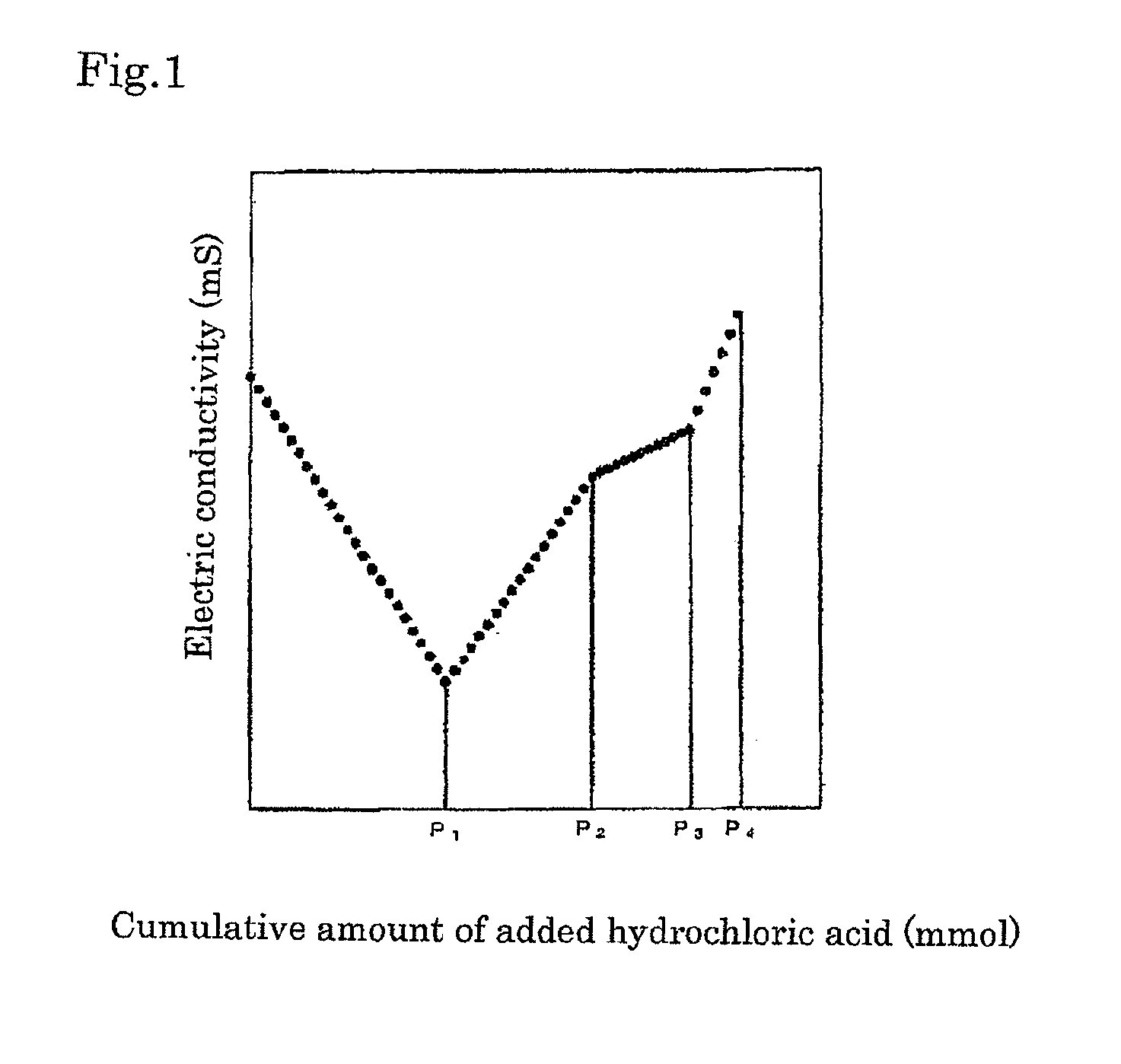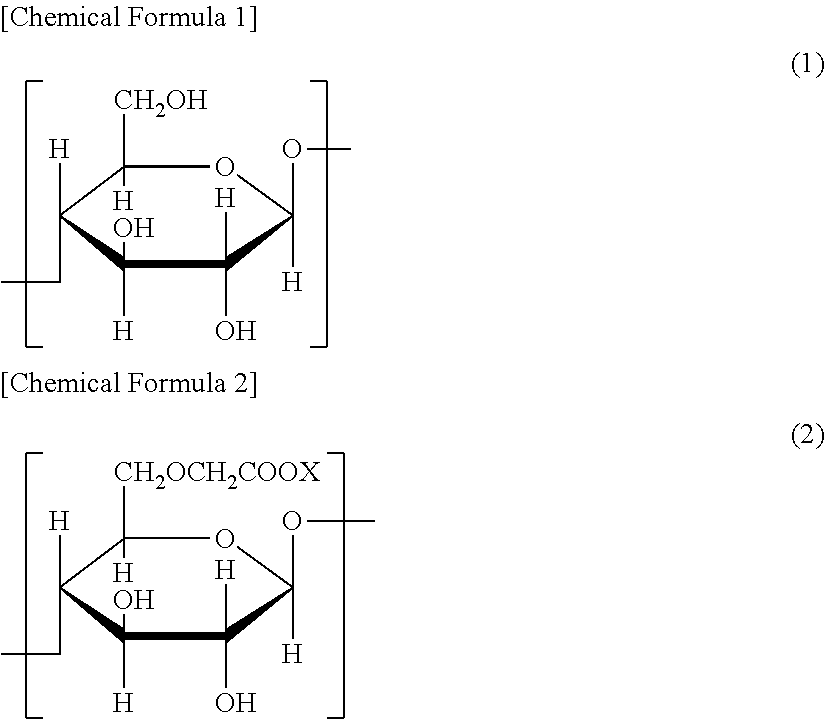Lithium ion secondary battery negative electrode slurry composition, a lithium ion secondary battery negative electrode, and lithium ion secondary battery
- Summary
- Abstract
- Description
- Claims
- Application Information
AI Technical Summary
Benefits of technology
Problems solved by technology
Method used
Image
Examples
example 1
The Production of Binder
[0102]Into a pressure-resistant container of 5 MPa with a stirrer, 46 parts of styrene, 49 parts of 1,3-butadiene, parts of methacrylic acid, 5 parts of sodium dodecylbenzenesulfonate, 150 parts of ion-exchange water and 1 part of potassium persulfonate as a polymerization initiator were added, and sufficiently stirred, followed by heating to 50° C. to start polymerization. When the amount of consumed monomer reached 95.0%, the container was cooled to stop the reaction to obtain a diene polymer particle dispersion liquid (the number average particle diameter of the polymer particles: 100 nm, the glass transition temperature of the polymer particles: −15° C.), which has a solid portion concentration of 40%, as a binder. Note that, the monomer composition used for obtaining the diene polymer particles contains 5 wt % of a monocarboxylic acid monomer (methacrylic acid) and the amount of surface acid groups per 1 g of polymer particles was 0.30 mmol.
(The Producti...
example 2
[0109]A slurry composition, a negative electrode and a half-cell were prepared and evaluated by carrying out the same procedures as in Example 1 except for changing the thickening agent to carboxymethylcellulose having a degree of polymerization of 1420 and a degree of etherification of 0.7 in Example 1. The results are shown in Table 1.
example 3
The Production of Binder
[0110]Into a pressure-resistant container of 5 MPa with a stirrer, 50 parts of styrene, 48.5 parts of 1,3-butadiene, 1.5 parts of methacrylic acid, 5 parts of sodium dodecylbenzenesulfonate, 150 parts of ion-exchange water and 1 part of potassium persulfonate as a polymerization initiator were added and sufficiently stirred, followed by heating to 50° C. to start polymerization. When the amount of consumed monomer reached 95.0%, the container was cooled to stop the reaction to obtain a diene polymer particle dispersion liquid (the number average particle diameter of the polymer particles: 105 nm, the glass transition temperature of the polymer particles: −18° C.), having a solid portion concentration of 40% as a binder. Note that, the monomer composition used for obtaining the diene polymer particles contains 1.5 wt % of a monocarboxylic acid monomer (methacrylic acid) and the amount of surface acid groups per g of polymer particles was 0.11 mmol.
[0111]A slur...
PUM
 Login to View More
Login to View More Abstract
Description
Claims
Application Information
 Login to View More
Login to View More - R&D
- Intellectual Property
- Life Sciences
- Materials
- Tech Scout
- Unparalleled Data Quality
- Higher Quality Content
- 60% Fewer Hallucinations
Browse by: Latest US Patents, China's latest patents, Technical Efficacy Thesaurus, Application Domain, Technology Topic, Popular Technical Reports.
© 2025 PatSnap. All rights reserved.Legal|Privacy policy|Modern Slavery Act Transparency Statement|Sitemap|About US| Contact US: help@patsnap.com


